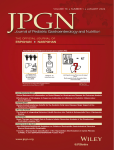Severe and Protracted Diarrhea: Results of the 3-Year SIGEP Multicenter Survey
ABSTRACT
Background:
The spectrum of severe and protracted diarrhea (SPD), previously defined as intractable diarrhea, has changed during the past several decades. Despite recent advances in determining the cause of SPD and in treatment, this syndrome still represents a challenge and is becoming a major problem affecting health care resources. This study was conducted to characterize the epidemiology, spectrum of causes, and the outcome of SPD in Italy in recent years.
Methods:
All the SPD cases seen at the major centers of pediatric gastroenterology in Italy during a 3-year period (1993-1996) were recruited in this multicenter, prospective survey.
Results:
Thirty-two children (26 boys and 6 girls; median age at the onset of SPD, 40 days) were enrolled in this study by 9 of 26 participating centers. Twelve were newly diagnosed cases, with an estimated SPD incidence rate in Italy of 0.64 to 0.92 × 10-5 infants per year. The most common causes were autoimmune enteropathy (n = 8) and ultrastructural abnormalities of the enterocyte (n = 7), whereas food intolerance and postenteritis syndrome were less frequent (3 and 2 cases, respectively). Two children with autoimmune enteropathy fulfilled the criteria for the X-linked variant of this condition. At the end of the study period, 9 of 31 patients had recovered, 15 still had diarrhea, and 7 had died.
Conclusions:
Severe and protracted diarrhea is a rare but challenging problem in Italy. Because parenteral nutrition or intestinal transplantation are the only options in a subset of cases (e.g., ultrastructural abnormalities of the enterocyte), infants with SPD should be referred to specialized centers where advanced diagnostic and therapeutic facilities are available.




